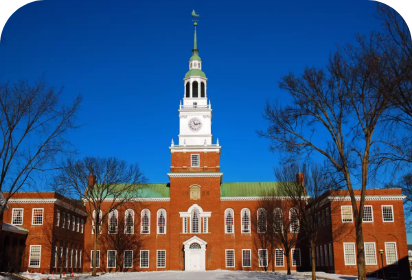
Each fall, as you may already know, the US News produces its ubiquitous ranking of American colleges and universities. And not surprisingly, each fall, the heads of admissions of said colleges and universities, wait with bated breath to beat their chests (hopefully) – or spin their narratives (if not so fortunate) – to the media, their bosses, high school counselors, prospective college recruits, alum, bond holders (yes, I said bond holders) and other similar financial stakeholders.
Now, I’ve spent much of my days (and nights) of the last month buried neck-deep in college essays…so, when one of my clients (thanks, Serge!) sent me the latest US News College Rankings, I knew it was time to emerge from my desk and remind my students (and especially, the parents who love them) of the rankings folly.
This year, as in nearly every year prior, the US News board made a few ‘small tweaks’ to the top secret ‘formulas’ it utilizes to determine said rankings. This year, one of those ‘tweaks’ included a few changes that have uniquely benefited larger, public universities (e.g., the omission of class size ratios as a consideration). Thus we saw quite a bit of jostling both at the top and in the middle, with larger universities the beneficiaries. Some notable schools that fell, for example, include UChicago, WashU, Wake Forest and Tulane; while conversely, Fresno State (CA) and Florida Atlantic jumped up quite a bit. Naturally, the risers had great praise for the new ranking system; the ‘losers’ not so much.
While the new formula was a boon for some, it’s very important to point out that the quality of a university does not change dramatically in any single academic year. I assure you that UChicago wasn’t twice as good a school last year when it was ranked 6th than it is today (ranked 12th). And Tulane, which was 44th last year and plunged to 73 this year, didn’t become ‘less than’ as a university; just as Fresno State, now ranked 64 spots higher than last year, didn’t become particularly ‘better than.’ These changes reflect a formulaic change as opposed to any educational or operational changes that took place at that school. They are subject to change year-to-year, sometimes quite dramatically, based only on a ‘tweak’ to the algorithm. As a measure of what will make a great school for you or your child, the rankings have very short-term, very limited value.
And still, these new numbers are important because they will impact how students and parents, fundraisers, and Wall Street, perceive these colleges and thus will impact where students apply, how much the university’s fund raising coffers will grow and at what rate those schools can borrow money to fund growth. They are not, however, an effective way to produce a college list.
For starters, the National Universities are not even compared to Liberal Arts Colleges – these schools are rightfully ranked separately, as they often have completely different missions. National Universities tend to have a wider range of majors, they dedicate more resources to research, and they also have masters and doctorate programs. Liberal Arts Colleges focus almost exclusively on undergraduate education and they award over 50% of their degrees in arts and sciences.
A deeper examination of this year’s formula reveals even better analysis as to why some colleges rose and others fell. While some of the changes may be noble, like a greater emphasis on graduation rates among students receiving Pell Grants, or on first-generation college students, they have little to do with the school’s actual academic performance, like in the classroom. Many public universities do have a higher percentage of students receiving Pell Grants, and those students are progressing to graduation. Which is good. The system is working. What’s also true is that private universities have a smaller number of Pell Grant recipients, and the new formula penalizes these universities for that fact. We can argue whether private universities should or shouldn’t be more aggressive in targeting Pell-eligible students, but I just can’t say that the prevalence of Pell-eligible students necessarily strengthens that university’s academic profile. Thus I can’t necessarily support its weight in an ‘academic’ ranking criteria.
As I mentioned above, class size was removed from this year’s formula, which hurt smaller often private colleges. While I’m not here to advocate any one category of school (i.e. private over public), I do believe that class size often correlates with educational quality.
Notice I said correlates. Small class size doesn’t cause an improvement in educational quality. But smaller classes do offer students a better opportunity to connect with professors, to speak up and contribute to class discussion, to interact with and be a part of the curriculum rather than simply sit back and take notes. This can translate to a better educational product, guidance and mentorship.
Please note there are MANY metrics in the US News formula that don’t directly contribute to educational quality, which is why I’m not a fan of the rankings. Alumni giving, for example, does not make a school “better”; we can only infer that the graduates had a positive experience as students and therefore feel the urge to contribute to their alma mater. SAT scores or high school GPA does not make a school “better”, it just means that the student body is made up of more accomplished high school students. And reputation, or peer voting among presidents, provosts and deans has little to do with educational quality, yet this metric accounts for 18% of the overall ranking.
Not to be entirely negative, there are two things I do like about the US News rankings. First of all, it’s helpful to have a collection of college data assembled in one place. Granted, there are other sources to gather college data such as the NCES College Navigator or the College Board, but US News offers another well-known platform. A second reason I like the US News Rankings is that, when a student comes into my office and reads to me a college list that sounds like all the others, I can make a recommendation that the student may not have considered. Often these recommendations come from the list of Liberal Arts colleges such as Swarthmore, Wesleyan or Richmond.
That said, the best way for students and parents to build a great college list starts by looking much deeper than a school’s ranking to determine whether a school is a “good fit”.
You see, what’s most important is not whether a school is “good” based on a ranking, but rather whether a school is a “good-fit” for you/your child. Answering this question requires, among other things, an understanding of you/your child’s learning style and whether that style matches a college’s philosophy, mission and profile. Not everyone is cut out for the Ivy League, or the University of Florida, or Swarthmore College. A great education is largely dependent on academic fit which may include access to faculty and appropriate majors of study. A great college experience is influenced by both the academic and non-academic opportunities that are available to students. Often these non-academic opportunities are not measured by rankings such as US News.
Finally, an important measure of a “good fit” must include affordability. A college that is highly ranked but unable or unwilling to meet your budget has no place on you/your child’s list. Affordability is measured not by sticker price, but by what we call University Generosity, and not all schools are equally generous. Some colleges award substantial merit scholarships, while others (Ivies, for example) only offer need-based aid. Understanding your financial aid eligibility is a critical exercise that should be completed while your child is in 10th grade.
If you are interested in going beyond the ‘rankings’ and learning more about how college admissions, institutional merit and financial aid intersect, or you want to have a frank discussion about your child’s credentials, your financials and what might make a “good fit”, then let’s connect. Sooner is always better than later.




